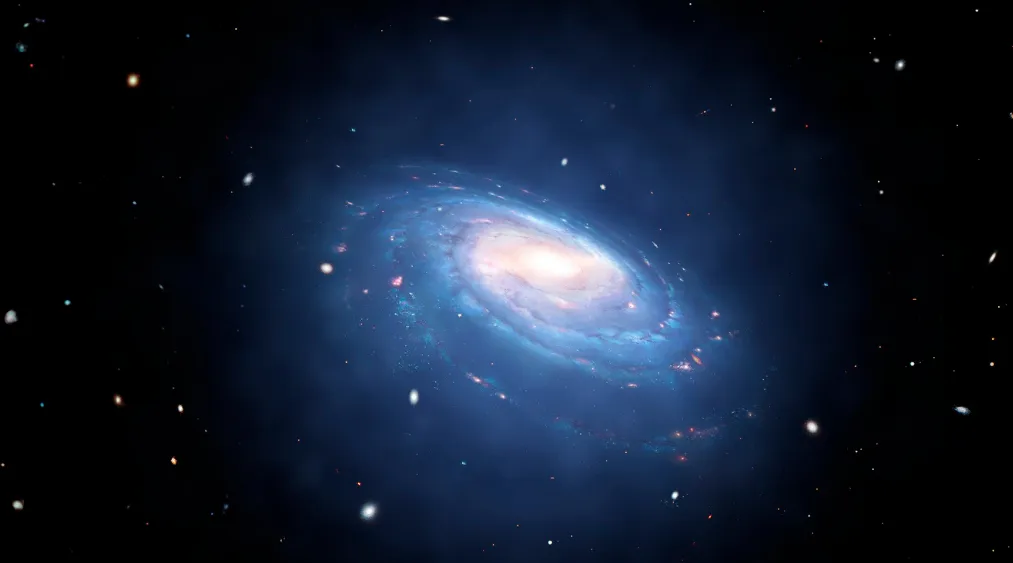The Matter-Antimatter Asymmetry Problem

The universe is a cosmic puzzle, and one of its most profound mysteries is the Matter-Antimatter asymmetry problem.
Anúncios
According to the Big Bang theory, equal amounts of matter and antimatter should have been created in the early universe.
Yet, today, we live in a universe dominated by matter.
Where did all the antimatter go? This question has puzzled scientists for decades, and solving it could unlock the secrets of our existence.
The Birth of Matter and Antimatter
In the first moments after the Big Bang, energy condensed into particles and antiparticles.
For every quark, there was an antiquark; for every electron, a positron.
When matter and antimatter meet, they annihilate each other, leaving behind pure energy.
If the universe had been perfectly symmetrical, all matter and antimatter should have annihilated, leaving nothing but a sea of photons.
Yet, here we are.
The fact that stars, planets, and even humans exist suggests that an imbalance occurred.
For every billion particles of antimatter, there were a billion and one particles of matter.
This tiny asymmetry—just one part in a billion—allowed the universe we know to form.
But what caused this imbalance?
Some researchers propose that unknown forces or particles could have influenced the production rates of matter and antimatter.
Exploring these possibilities could provide crucial insights into the conditions of the early universe.
The Search for Answers
Physicists have proposed several theories to explain the Matter-Antimatter asymmetry.
One leading idea is CP violation, a phenomenon where the laws of physics treat matter and antimatter slightly differently.
In 1964, researchers discovered CP violation in the decay of neutral kaons, a breakthrough that earned them the Nobel Prize.
However, the observed CP violation is far too weak to account for the universe’s matter dominance.
Another theory involves neutrinos.
These elusive particles might be their own antiparticles, a property that could have tipped the scales in favor of matter.
Experiments like the Deep Underground Neutrino Experiment (DUNE) are currently investigating this possibility.
Moreover, the study of neutrinos could reveal new physics beyond the Standard Model, potentially explaining the asymmetry in greater detail.
As researchers delve deeper into these theories, they may uncover connections that reshape our understanding of fundamental particles and forces.

The Role of the Higgs Boson
The discovery of the Higgs boson in 2012 opened new avenues for understanding the asymmetry.
Some scientists speculate that the Higgs field, which gives particles their mass, might have interacted differently with matter and antimatter in the early universe.
This interaction could have created a slight preference for matter, setting the stage for the cosmos we see today.
Additionally, the Higgs boson’s properties may help explain why matter has mass while antimatter does not.
Understanding these nuances could provide crucial insights into the fundamental workings of the universe.
+ The Composition of the Universe: What Are Galaxies and Stars Made Of?
Table 1: Key Differences Between Matter and Antimatter
| Property | Matter | Antimatter |
|---|---|---|
| Charge | Positive (proton) | Negative (antiproton) |
| Spin | Aligned with momentum | Opposite to momentum |
| Interaction with Higgs | Slight asymmetry? | Under investigation |
The Experimental Frontier
To solve the Matter-Antimatter puzzle, scientists are conducting experiments at facilities like CERN.
The Large Hadron Collider (LHC) smashes particles together at nearly the speed of light, recreating conditions similar to the early universe.
By studying the resulting debris, researchers hope to find clues about why matter prevailed.
One promising avenue is the study of baryogenesis, the process that led to the excess of matter.
According to the Sakharov conditions, three criteria must be met for baryogenesis to occur:
- Violation of baryon number conservation.
- Violation of CP symmetry.
- Departure from thermal equilibrium.
While these conditions provide a framework, the exact mechanisms remain elusive.
Advancements in technology and experimental techniques are crucial for probing these conditions further.
As experiments evolve, they may reveal unexpected phenomena that challenge our current understanding of particle physics.

The Cosmic Implications
Understanding the Matter-Antimatter asymmetry isn’t just an academic exercise—it has profound implications for our understanding of the universe.
If antimatter had dominated, galaxies, stars, and life as we know it would never have formed.
The asymmetry is a reminder of how finely tuned the universe is, raising questions about the fundamental laws of physics.
Moreover, exploring this asymmetry may lead to insights about the ultimate fate of the universe.
If we can understand why matter prevails, we might also predict how the universe will evolve in the future.
++ Dark Energy: The Cosmic Mystery That Expands the Universe
Table 2: Matter-Antimatter Asymmetry in the Universe
| Component | Matter Content | Antimatter Content |
|---|---|---|
| Stars | 100% | 0% |
| Cosmic Rays | 99.9% | 0.1% |
| Early Universe | 1,000,000,001 | 1,000,000,000 |
The Philosophical Angle
The Matter-Antimatter asymmetry problem also touches on deeper philosophical questions.
Why does the universe exist at all?
Is our existence a mere fluke, or is there a deeper principle at work?
Some theorists suggest that multiple universes exist, each with different physical laws.
In this multiverse scenario, our universe might be one of the rare ones where matter dominates, making life possible.
This concept raises intriguing questions about the nature of reality and our place within it.
Philosophers and scientists alike grapple with the implications of a multiverse, exploring how it might reshape our understanding of existence.
The Future of Research
As technology advances, so does our ability to probe the mysteries of the cosmos.
Upcoming experiments, such as those at the High-Luminosity LHC and next-generation neutrino observatories, promise to shed new light on the Matter-Antimatter asymmetry.
These efforts could reveal new particles, forces, or symmetries that reshape our understanding of reality.
Collaborative international projects are essential for pooling resources and expertise, maximizing the potential for groundbreaking discoveries.
For more insights on the latest research in particle physics, visit CERN.
Conclusion
The Matter-Antimatter asymmetry problem is one of the greatest challenges in modern physics.
It forces us to confront fundamental questions about the nature of the universe and our place within it.
While we have made significant progress, the final answer remains elusive.
As we continue to explore the cosmos, we inch closer to solving this cosmic mystery—and perhaps uncovering even deeper truths about existence itself.
By unraveling the secrets of matter and antimatter, we not only satisfy our curiosity but also gain a deeper appreciation for the delicate balance that makes life possible.
The universe is a story still being written, and the Matter-Antimatter asymmetry is one of its most intriguing chapters.
